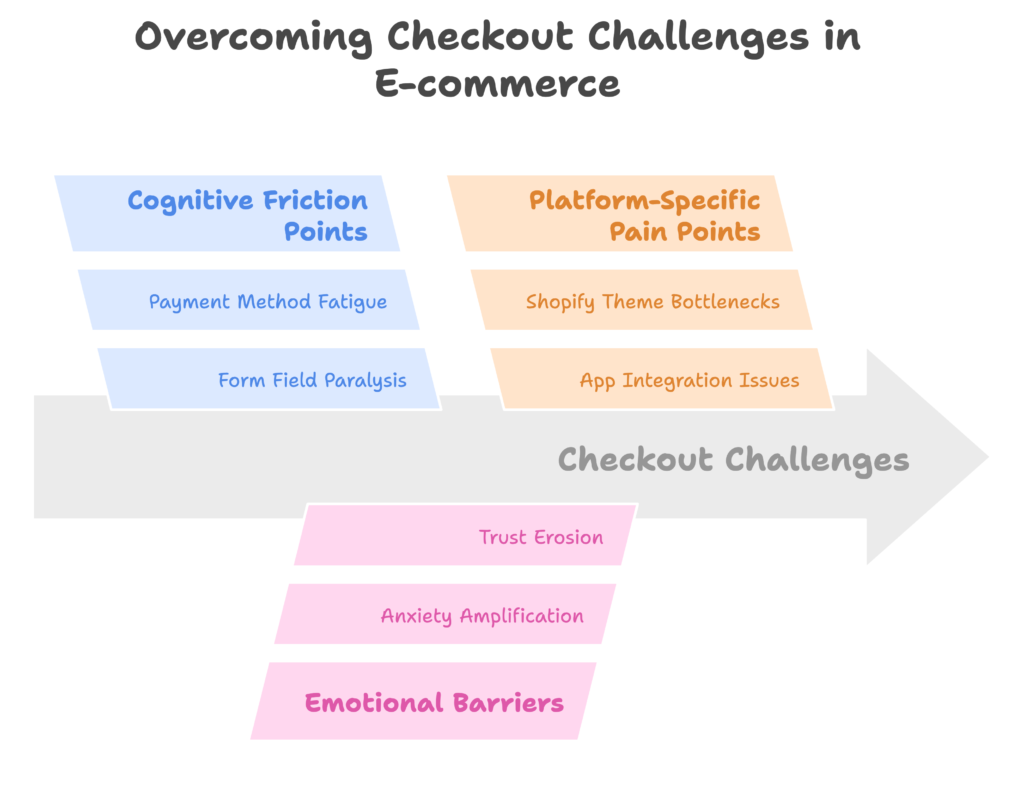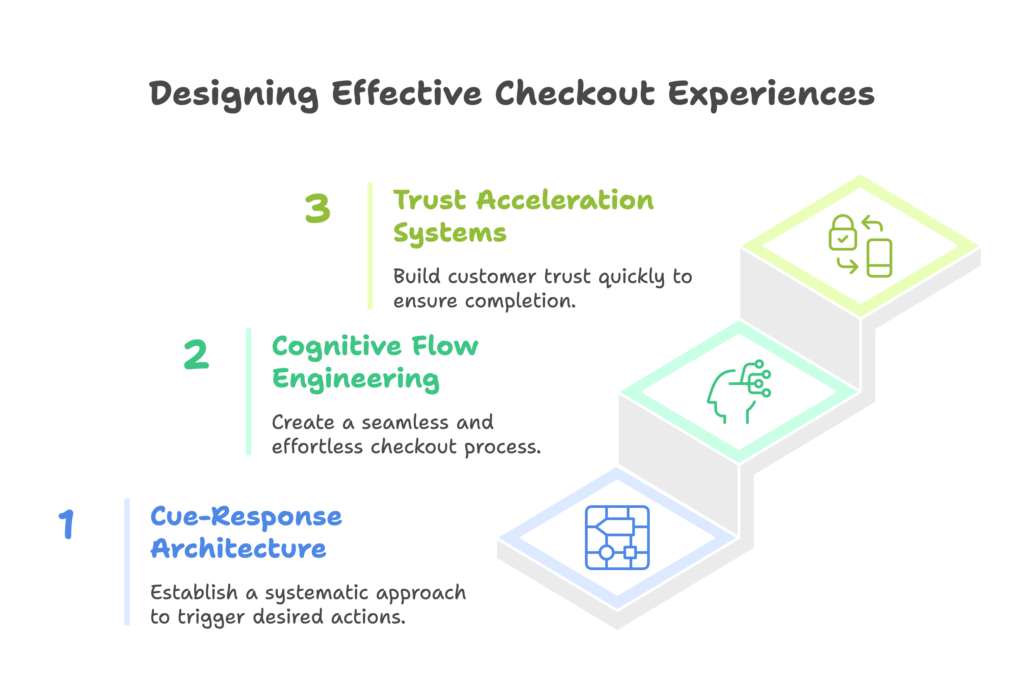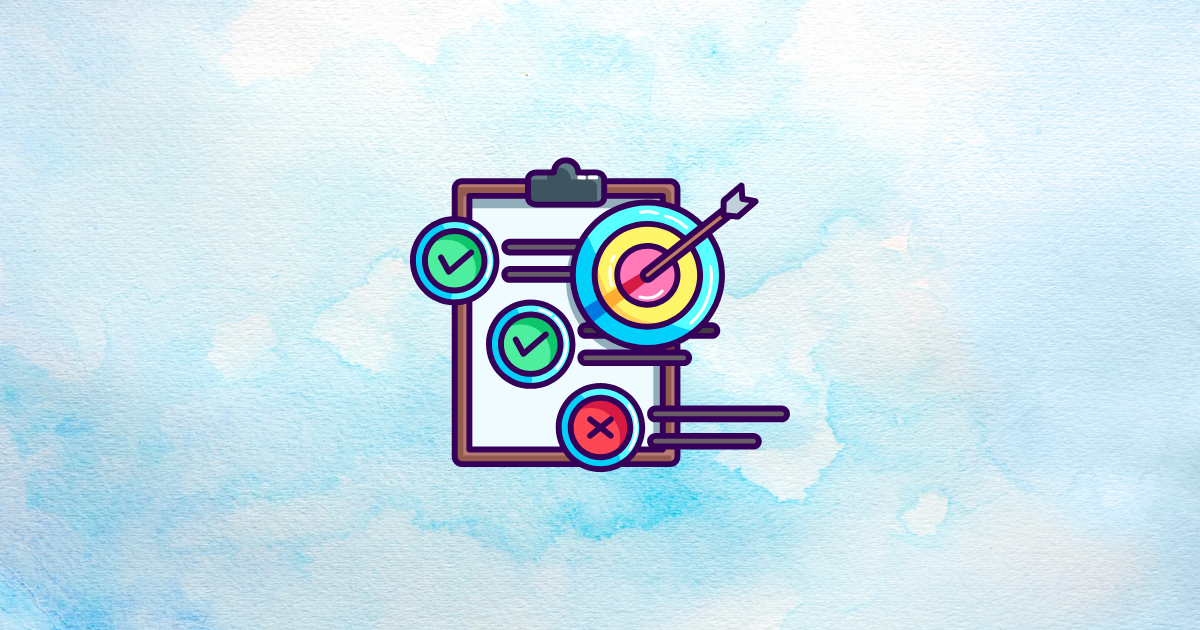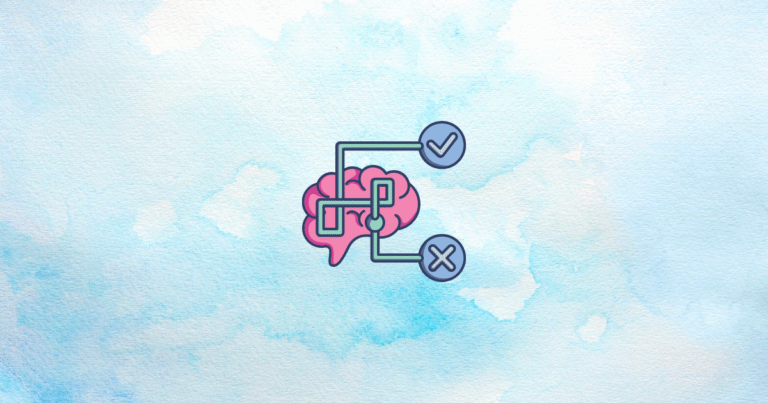Have you ever wondered why some online stores seem to magically guide you through checkout while others leave you frustrated and abandoning your cart? The secret isn’t magic—it’s the power of implementation intentions.
Ever found yourself thinking “I’ll just browse” but somehow ended up completing a purchase without hesitation? That smooth experience wasn’t an accident. It was carefully crafted using psychological principles that anticipate your needs and remove obstacles before you even encounter them.
In this article, you’ll discover how the science of implementation intentions—specific plans that link situational cues with responses—can transform your checkout process from a conversion killer into a sales machine. By the time you finish reading, you’ll understand:
- The psychological foundations that make implementation intentions so powerful
- How to identify and overcome the specific challenges in your checkout flow
- A practical framework for designing intention-friendly checkout experiences
- Specific tactics you can implement today for each phase of your checkout
- How to measure and optimize your implementation intentions
- Ethical considerations to ensure you’re helping customers, not manipulating them
Ready to stop losing sales at checkout and start creating experiences that feel effortless to your customers? Let’s dive in!
Foundations of Implementation Intentions
Before we jump into the practical applications, let’s understand what makes implementation intentions work in the first place. These aren’t just clever design tricks—they’re rooted in how our brains actually function.
Psychological Mechanisms
Implementation intentions were first developed by psychologist Peter Gollwitzer, who discovered that vague goals like “I want to eat healthier” often fail, while specific if-then plans like “If it’s 3 PM and I’m hungry, I’ll eat an apple instead of chips” succeed dramatically more often.
Why do they work so well? When you create an implementation intention, you’re essentially programming your prefrontal cortex to recognize specific situations and respond automatically. This removes the need for decision-making in the moment, which is often where willpower fails.
Interestingly, these intentions also leverage episodic future thinking—our ability to mentally simulate future scenarios. When a customer mentally rehearses completing a checkout (even unconsciously), they’re more likely to follow through when they encounter your actual checkout flow.
Neural Correlates of Effective Planning
On a neurological level, implementation intentions work by engaging multiple brain systems:
- The basal ganglia, responsible for habit formation, helps turn intentions into automatic responses
- The hippocampus and prefrontal cortex work together to encode cues that will trigger desired behaviors
- The brain’s dopamine system reinforces successful plan execution, making future completions more likely
This isn’t just theoretical—brain imaging studies have shown increased activity in these regions when people successfully execute pre-planned behaviors.
Behavioral Economics Framework
From a behavioral economics perspective, implementation intentions help overcome several common biases:
- Hyperbolic discounting (valuing immediate rewards over future ones) is countered by creating scaffolding that makes the right action easier in the moment
- Cognitive load is reduced through automation, freeing mental resources for necessary decisions
- The paradox of choice (being paralyzed by too many options) is mitigated through what behavioral economists call “decision tunneling”—creating a clear path forward
Understanding these foundations helps explain why seemingly small changes to your checkout flow can have such dramatic effects on conversion rates. But what specific challenges do we need to overcome in checkout processes? Let’s explore those next.
Checkout-Specific Implementation Challenges
Now that we understand the science behind implementation intentions, let’s look at the specific challenges customers face during checkout. Identifying these friction points is the first step to creating a smooth path to purchase.

Cognitive Friction Points
Checkout processes are filled with cognitive hurdles that can derail even the most determined shoppers:
- Form field paralysis: When faced with too many fields to complete, customers experience decision fatigue and may abandon their purchase
- Payment method decision fatigue: Each additional payment option increases cognitive load, potentially overwhelming customers
- Privacy calculus conflicts: Customers constantly weigh the value of completing a purchase against concerns about sharing personal information
Emotional Barriers
Beyond cognitive challenges, emotional factors play a crucial role in checkout completion:
- Anxiety amplification: Multi-step processes can trigger anxiety about what’s coming next or how much information will be required
- Trust erosion: Unclear messaging or unexpected steps can rapidly diminish the trust built during the shopping experience
- Self-concept threats: Requests for certain personal information can trigger concerns about identity and privacy
Platform-Specific Pain Points
Different ecommerce platforms come with their own unique challenges:
- Shopify theme-induced bottlenecks: Default themes may create decision points that interrupt the flow toward purchase
- Third-party app integration inconsistencies: Apps that don’t seamlessly integrate can create jarring experiences that break the customer’s momentum
- Mobile vs desktop processing differences: The way our brains process information differs between devices, requiring thoughtful adaptation
These challenges might seem daunting, but they also represent opportunities. By addressing each friction point with targeted implementation intentions, you can create a checkout experience that feels effortless. So how do we design these intentions? That’s what we’ll explore next.
Implementation Intentions Design Framework
With a clear understanding of the challenges, it’s time to build a framework for designing implementation intentions that work. This isn’t about random tactics—it’s about creating a systematic approach to guide customers smoothly through checkout.

Cue-Response Architecture
At the heart of implementation intentions is the connection between specific cues and desired responses:
- Progressive disclosure timing: Reveal information and options at precisely the moment they’re needed, not before
- Microcopy as behavioral priming: Small bits of text can serve as powerful cues that trigger automatic responses
- Visual salience mapping: Direct attention to the most important elements through strategic use of color, size, and positioning
Cognitive Flow Engineering
Creating a sense of flow—that state where actions feel effortless and automatic—is crucial for checkout success:
- Field reduction strategies: Minimize the number of fields to prevent choice saturation and decision fatigue
- Error prevention: Use predictive input masking to prevent errors before they happen
- Chunking techniques: Group related information to align with the natural limits of working memory (typically 5-7 items)
Trust Acceleration Systems
Trust isn’t just important—it’s essential for checkout completion. Here’s how to build it quickly:
- Security badge placement: Position trust signals where they’ll have the most impact based on neurolinguistic research
- Social proof integration: Show relevant social proof at moments of highest uncertainty
- Progress indicators: Reduce anxiety by clearly showing how many steps remain and what information will be needed
This framework provides the foundation for creating specific implementation intentions throughout your checkout process. But what does this look like in practice? Let’s explore concrete tactics for each phase of the checkout journey.
Implementation Intention Tactics by Checkout Phase
Now for the practical part—specific tactics you can implement today. These are organized by checkout phase to help you create a coherent experience from cart to confirmation.
Cart Page Optimization
The cart page is your first opportunity to set customers on the path to completion:
- Bundle savings logic: If a customer has more than three items, automatically suggest bundles that offer savings
- Free shipping meter: If cart value is below average, trigger a visual meter showing how close they are to free shipping
- Proactive support: If hesitation time exceeds 8 seconds, activate a live chat prompt to address concerns
Shipping Information Flow
Shipping information collection is often where friction increases—here’s how to smooth the process:
- Location-based options: As soon as a zip code is entered, pre-load relevant local pickup options
- Real-time inventory display: When a delivery date is selected, show real-time inventory status to create urgency
- Identity reinforcement: If eco-friendly shipping is chosen, reinforce the customer’s green identity with affirming messaging
Payment Process Design
The payment phase is where anxiety peaks and abandonment is most likely:
- Security reassurance triggers: If the cursor leaves the payment section, trigger subtle security reassurance messaging
- Alternative payment suggestions: If a payment method is declined, automatically suggest alternatives without requiring the customer to start over
- Visual encryption proof: If a CVV is entered incorrectly, display visual encryption indicators to reassure about security
These tactics translate the theory of implementation intentions into practical steps you can take today. But how do you know if they’re working? That’s where measurement comes in.
Measurement and Optimization
Implementation intentions aren’t a one-and-done solution—they require ongoing measurement and refinement. Here’s how to build a systematic approach to improving your checkout experience.
Neurometric Tracking
Advanced tools can help understand the cognitive and emotional responses to your checkout flow:
- Eye-tracking studies: Identify which implementation cues actually capture attention
- EEG measurement: Quantify cognitive load reduction to ensure your design is truly simplifying the experience
- Facial coding: Detect emotional barriers through facial expressions during user testing
Behavioral Analytics
More accessible analytics approaches can still provide valuable insights:
- Implementation adherence scoring: Track how often customers follow your intended path
- Abandonment heatmapping: Visualize exactly where customers are leaving your checkout process
- Micro-conversion analysis: Break the funnel into smaller steps to pinpoint specific drop-off points
Continuous Improvement Systems
Create a systematic approach to ongoing optimization:
- A/B testing matrix: Test variations of implementation intentions to identify the most effective approaches
- Churn prediction models: Use plan adherence data to predict and prevent abandonment
- Machine learning adaptation: Implement systems that dynamically adjust intentions based on user behavior
Measurement is what transforms implementation intentions from theory into practice. But as we optimize for conversion, we must also consider the ethical implications of our design choices.
Ethical Implementation Considerations
The power of implementation intentions comes with responsibility. Let’s explore how to use these techniques ethically to help customers, not manipulate them.
Choice Architecture Boundaries
Creating healthy boundaries for how we influence customer decisions:
- Dark pattern avoidance: Ensure cues guide rather than trick users into actions they don’t intend
- Cognitive freedom preservation: Maintain the customer’s ability to make conscious choices rather than purely automatic ones
- Vulnerability protections: Implement special considerations for users who may be more susceptible to influence
Privacy-Enhanced Implementation
Respecting privacy while creating personalized experiences:
- Zero-knowledge proof systems: Create personalized experiences without storing unnecessary data
- Ephemeral data usage: Use data temporarily for immediate personalization without permanent storage
- GDPR-compliant tracking: Ensure all behavioral tracking meets or exceeds regulatory requirements
Sustainable Habit Formation
Creating positive long-term relationships rather than short-term gains:
- Autonomy preservation: Design systems that eventually help customers make better decisions independently
- Goal-alignment verification: Ensure your implementation intentions align with customers’ actual goals
- Cognitive fatigue monitoring: Prevent burnout from too many decisions or too much personalization
By approaching implementation intentions ethically, you create not just better conversions but better customer relationships that last beyond the immediate purchase.
The science of implementation intentions gives us powerful tools for creating checkout experiences that feel effortless and natural. By understanding the psychological foundations, addressing specific challenges, designing with intention, implementing targeted tactics, measuring results, and maintaining ethical standards, you can transform your checkout from a conversion killer into a sales accelerator.
Remember that implementation intentions work best when they’re specific, contextual, and aligned with customer goals. Small changes—like showing a free shipping meter or providing security reassurance at the right moment—can have outsized impacts on your conversion rates.
Ready to boost your Shopify store’s checkout conversion? Growth Suite helps you implement these tactics quickly and easily, without complex coding or design work. Try it today to see how implementation intentions can transform your sales.
References
- Gollwitzer, P.M. & Sheeran, P. (2006). Implementation Intentions. Meta-Analysis. https://doi.org/10.1177/1088868306289375
- Fayad, R. (2015). TAM in E-commerce. [PDF] Retrieved from https://digitalcommons.butler.edu/cgi/viewcontent.cgi?article=1708&context=ugtheses
- Stripe. (2023). Checkout Design Optimization. https://stripe.com/resources/more/how-to-design-an-ecommerce-checkout-page-that-converts-more-sales
- Uptain. (2022). Checkout Conversion Tips. https://uptain.de/en/blog/conversion-optimization-checkout/
- FastSimon. (2024). Shopper Intent Analysis. https://www.fastsimon.com/ecommerce-wiki/site-search/understanding-shoppers-intent-to-maximize-ecommerce-conversion/
- Brice, L. (n.d.). Implementation Intentions Guide. [PDF] https://www.lisabrice.co.uk/wp-content/lb-r/15.implementation-intentions.pdf




